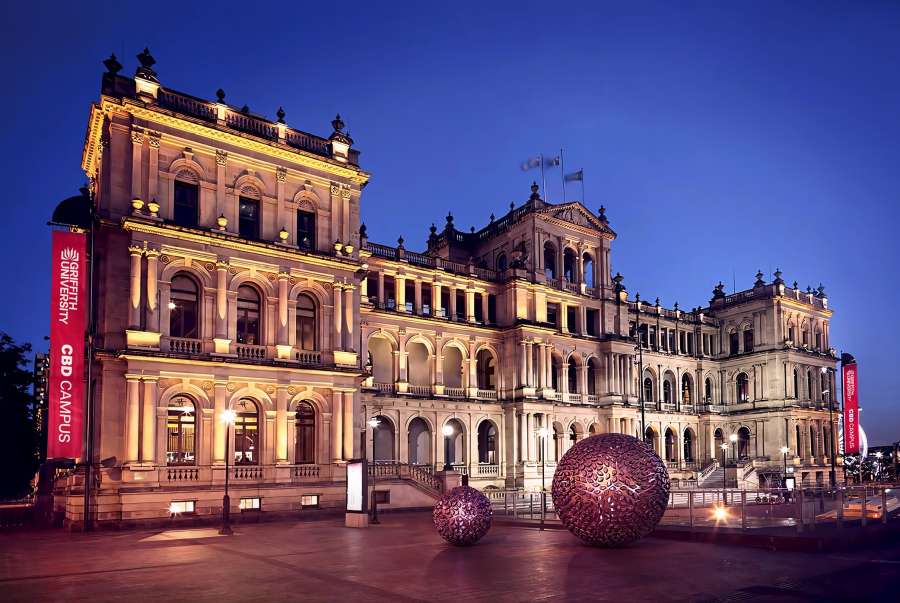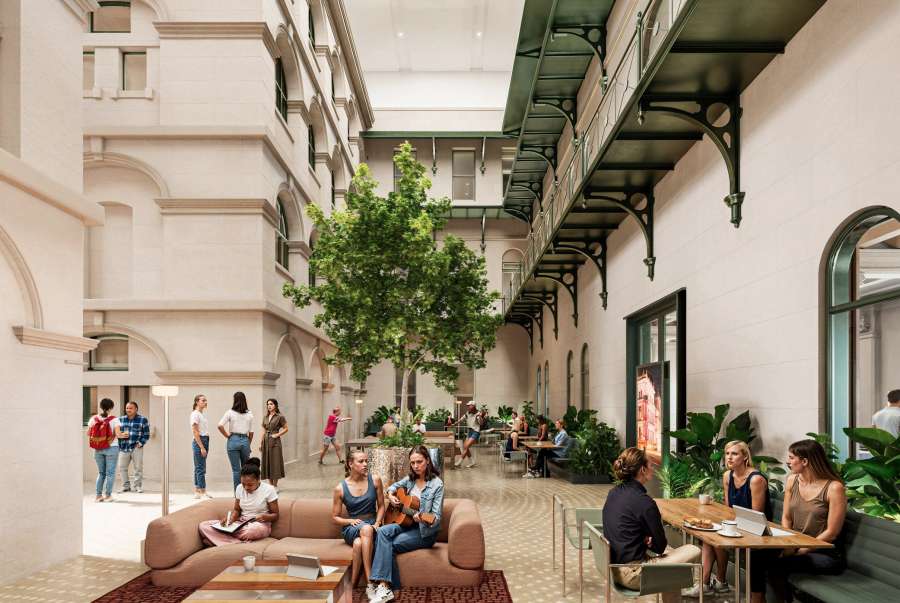The Future of Workplaces is Here
A cutting-edge creative hub in a prime CBD location, purpose-built for world class performance, collaboration and growth? Welcome to Omnicom Oceania's new Melbourne workspace.
For the latest news and updates, subscribe to the MADE Newsletter
Few buildings embody Brisbane’s civic history quite like the Treasury on Queen Street, at the Queen’s Gardens end of the CBD. Constructed in the 1800s, the grand landmark has served as government offices and, more recently, as a casino. Now, in a bold act of transformation, the building is set to be reborn as Griffith University’s flagship CBD campus. This ambitious project, delivered in partnership with FDC, reflects a broader shift in the property sector: one where renewal and adaptive reuse are shaping the future of our cities.
Following the campus opening in 2027, the building will eventually welcome more than 7,000 students and 400 staff across business, IT and law disciplines, as well as postgraduate and executive education and Griffith College. Beyond its academic purpose, the campus will act as a civic hub, forging stronger connections between university, industry and community at the very heart of the city.

A New Front Door for Griffith University
For Griffith University, the Treasury project is not simply about new facilities, it represents a transformation of identity. “This is the opportunity for a new front door for Griffith University in Brisbane’s CBD,” says Griffith Senior Project Manager, Chris Martenstyn-Powis. “The vision is to implement modern teaching methods within a heritage form, sympathetically using each volume in its current configuration. We are adapting our pedagogy to the building, rather than forcing the building to change for us.”
That philosophy aligns closely with FDC’s approach. For FDC Senior Project Manager Luke Nicolo, the greatest challenge lies in striking the balance between preserving the building’s rich history and equipping it for the demands of contemporary education.
“It’s important to maintain the heritage fabric while replacing all the end-of-life services,” Luke explains. “We’re introducing new electrical, mechanical and air conditioning systems, but doing it in non-standard ways, like running services beneath the original timber floors rather than through ceiling spaces or heritage walls. Even lighting and power are being designed with wireless technology to reduce the need for hard cabling. It’s about respecting the old while quietly embedding the new.”
This careful layering ensures Griffith University's modern teaching methods can thrive within heritage spaces. As Chris points out, heritage proportions can sometimes offer unexpected advantages: “As education has moved towards more interactive, flat-floor learning, these smaller heritage rooms actually work in our favour. They offer clear sightlines, easy access and a brighter, more integrated experience,” he says.

Future-Proofing Education
Flexibility has been a guiding principle of the project. While the heritage aspects are inherently rigid, adaptability has been embedded into furniture, systems and infrastructure.
“Almost every piece of furniture is designed to be flexible,” Chris explains. “Rooms can switch seamlessly between an interactive teaching mode, a computer lab or events. It’s about ensuring the building can support functions we haven’t even imagined yet.”
FDC has mirrored this intent in its construction strategy. “We’re future-proofing by building in spare capacity for power and data and running extra cable pathways from the outset,” Luke adds. “That way, if Griffith University want to expand or add technology in years to come, they can do so without disruptive works.” This dual approach, flexible teaching formats paired with invisible infrastructure, ensures the campus will remain relevant as learning, research and industry engagement continue to evolve.
Light, Legacy and Sustainability
One of the most transformative aspects of the project will be undoing the compartmentalisation left behind by the casino. “Reintegrating natural light is critical,” says Chris. “We want students and staff to enjoy the heritage windows, to understand the building’s relationship to the city beyond. That connection gives the spaces a sense of openness and belonging.” Sustainability is equally central.
“We’re repurposing many of the materials left from the casino fitout into new furniture and joinery,” Chris adds. “It’s about minimising waste but also keeping a living memory of the building.”
At the heart of the new campus will be the internal courtyard, where three expansive skylights will transform the space into a vibrant hub for study, collaboration and events. Alongside this, carefully restored high-significance heritage rooms will preserve the building’s grandeur for new generations.

A Catalyst for Brisbane
Adaptive reuse is increasingly recognised as valuable in the built environment, showing how historic spaces can be reimagined to serve contemporary needs. For Chris Martenstyn-Powis, that responsibility carries special weight. “To be the custodian of a building with such embedded cultural reference for Brisbane is incredibly exciting,” he reflects. “To show that adaptive reuse is possible at this scale, in a heritage building, right in the heart of the city, is a powerful way to lead by example. FDC rapidly understood the scale and complexity of this project. They’ve shown the ability to deliver a design that honours the building while preparing it for the future.”
The Treasury redevelopment extends its impact well beyond Griffith University. A condition of the project is to maintain public access through the building, connecting Queen Street Mall, Queen’s Gardens and the broader CBD precinct. “A key outcome is activating the building and the area around it,” notes Luke. “It’s not just a campus for students, it’s about opening pathways, creating public spaces and allowing the community to engage with the building’s heritage in new ways.”
For Griffith, the Treasury campus will serve as a new front door for the University, elevating its profile locally and globally. For Brisbane, it represents the renewal of an iconic site into a hub of learning and innovation. And for FDC, it underscores a reputation for delivering future-focused workplaces and community spaces: projects that honour history while creating enduring value.
Celebrating 35 Years + Counting